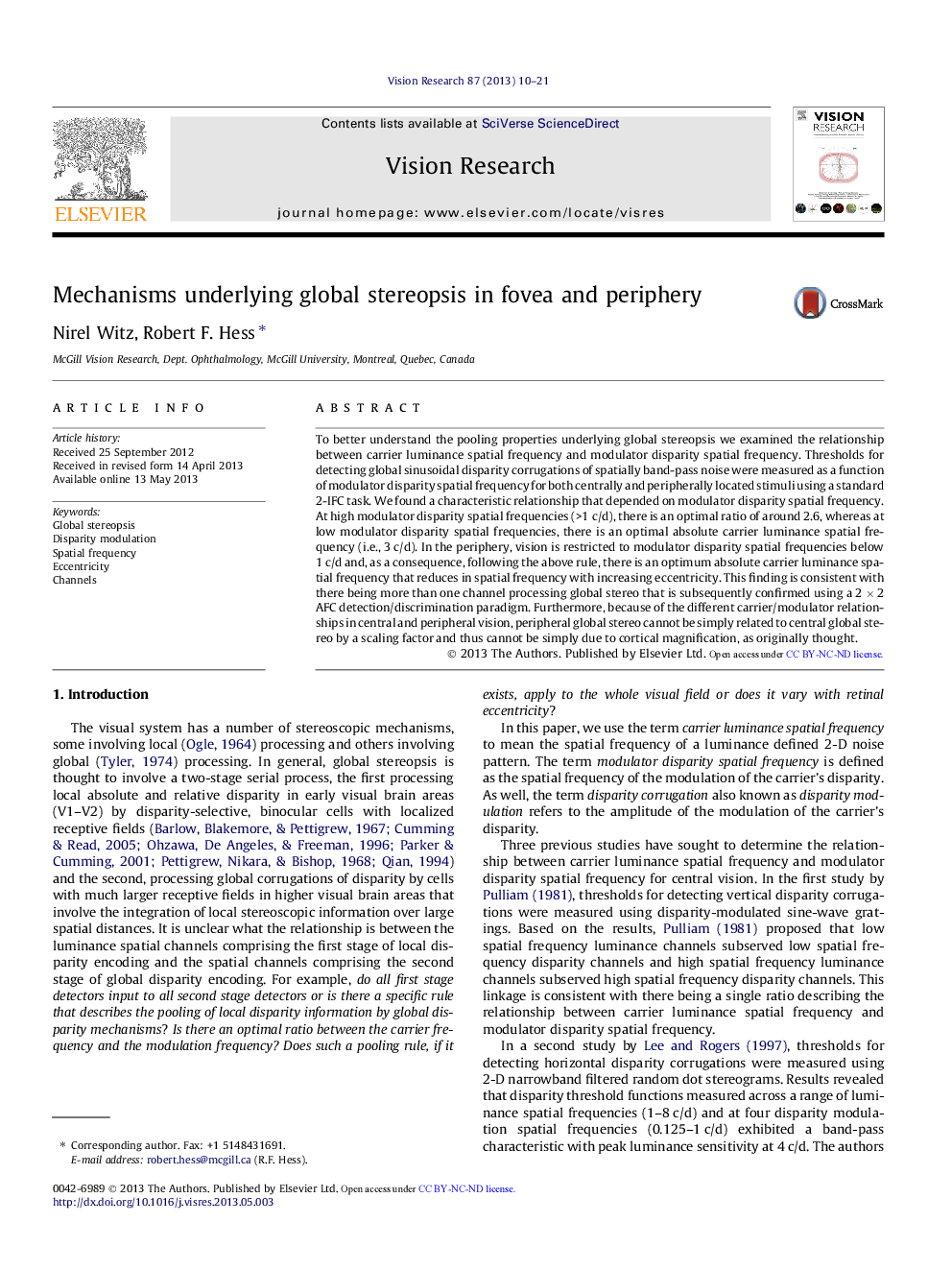| Article ID | Journal | Published Year | Pages | File Type |
|---|---|---|---|---|
| 6203606 | Vision Research | 2013 | 12 Pages |
â¢Relationship between carrier spatial frequency and modulation spatial frequency.â¢Relationship with eccentricity is outlined.â¢Evidence for multiple disparity mechanisms for global disparity.
To better understand the pooling properties underlying global stereopsis we examined the relationship between carrier luminance spatial frequency and modulator disparity spatial frequency. Thresholds for detecting global sinusoidal disparity corrugations of spatially band-pass noise were measured as a function of modulator disparity spatial frequency for both centrally and peripherally located stimuli using a standard 2-IFC task. We found a characteristic relationship that depended on modulator disparity spatial frequency. At high modulator disparity spatial frequencies (>1Â c/d), there is an optimal ratio of around 2.6, whereas at low modulator disparity spatial frequencies, there is an optimal absolute carrier luminance spatial frequency (i.e., 3Â c/d). In the periphery, vision is restricted to modulator disparity spatial frequencies below 1Â c/d and, as a consequence, following the above rule, there is an optimum absolute carrier luminance spatial frequency that reduces in spatial frequency with increasing eccentricity. This finding is consistent with there being more than one channel processing global stereo that is subsequently confirmed using a 2Â ÃÂ 2 AFC detection/discrimination paradigm. Furthermore, because of the different carrier/modulator relationships in central and peripheral vision, peripheral global stereo cannot be simply related to central global stereo by a scaling factor and thus cannot be simply due to cortical magnification, as originally thought.
